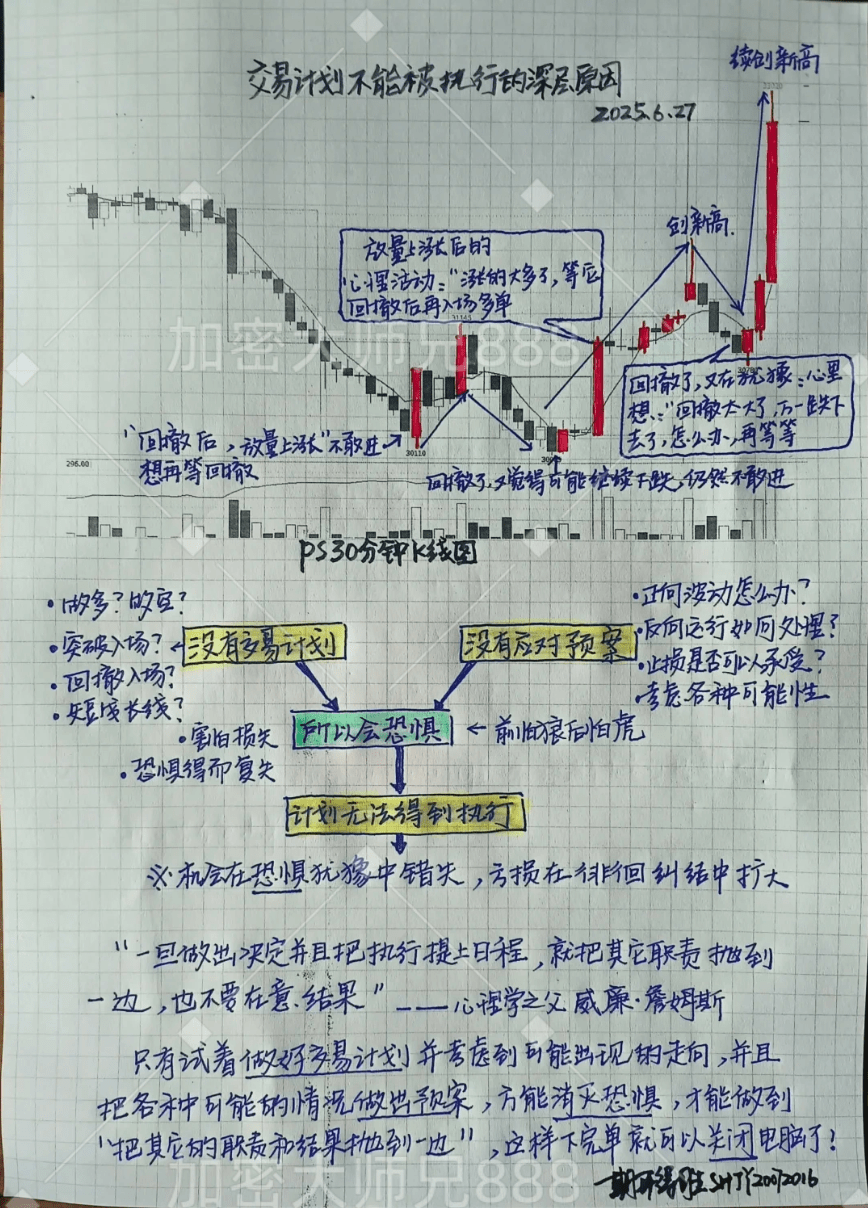I have been in the currency circle for ten years and a professional coin trader for 6 years, more than 3100 days. I have done long-term, short-term, ultra-short, and swing trading, and I have basically done all types of methods. I am relatively qualified to speak on this issue.
I always say that mastering a skill is a 10,000-hour law, 8 hours a day, more than 200 days a year of review, almost 5 years, this is just the beginning
The basis for stable profit. There will be a big pit within 10 years, so to be on the safe side, don't put more capital in than you can afford within 10 years.
Many masters who have traded from tens of thousands to tens of millions or hundreds of millions only used very large multiples of contracts, and as a result, many of them died in a bear market, you just don't know it. Human nature often makes people lose the ability to judge correctly in the face of big trends.
Back to the main topic, next I will share all my dry techniques with you here!
Come on, let's do a multiple-choice question first:
How are trends initiated? That is, where does the starting point of a trend begin?
A: All the way to the end, catching reversals, commonly known as V-shaped reversals
, A new trend begins.
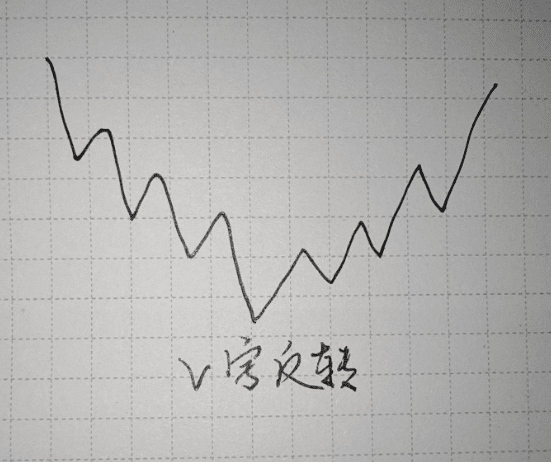
B: After going sideways, breaking through against the direction before the sideways period, a trend in the opposite direction begins (and that sideways period is renamed as bottoming or topping).
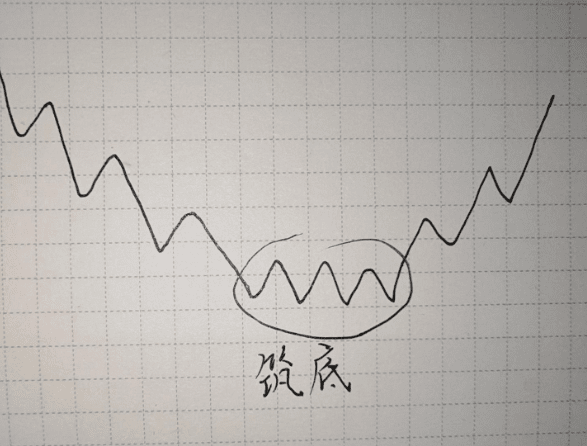
C: After going sideways, breaking through along the direction before the sideways period, a trend in the same direction as before the sideways period begins (the sideways period just now is renamed as the center). Is this a new trend or a continuation of the original trend?
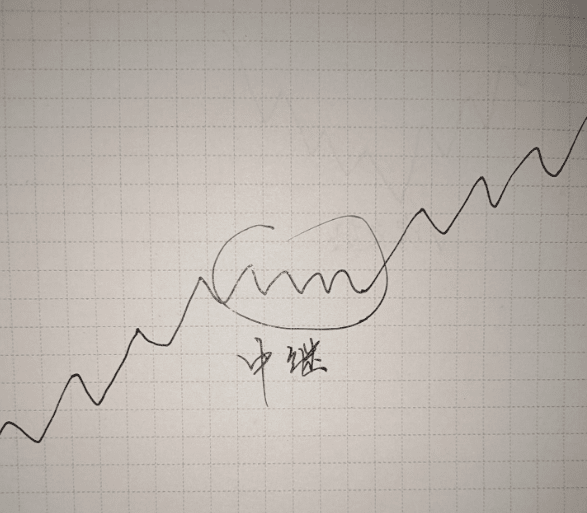
Answer:
Directly choose A, born with a constitution prone to losses. Some may think A is wrong, but usually do things like A. Check your orders, especially those that led to liquidation or consecutive losses. However, the occurrence of A often provides us with excellent opportunities (more details later).
Those who choose B and C have initially touched the threshold of trading, and the watershed between profit and loss lies in the handling of the profit-loss ratio of a single trade. If handled properly, you can make money in the long run.
Remember a golden rule:
Trends mostly originate from sideways consolidation. The longer the consolidation, the greater the probability of a trend starting. Once a trend is established, it is difficult to change (the direction on the right is mostly in the same direction as the left).
-----------------------------------
OK, let's elaborate on this!!!!
First, let's talk about the situation of option A:
Because a trend is jointly certified by bulls and bears (for example, in a downtrend, bears are the long-term force, and bulls also see a long-term decline, so they only conduct short-term operations). A V-shaped or inverted V-shaped reversal requires both parties to reach a consensus in the opposite direction again. How difficult is that? V-shaped reversals do exist in the market, but the probability is too low.
So those who always bet on V-shaped reversals often lose so much that they doubt their lives!
And as an individual, people are afraid of heights and depths, so they will try to buy at the bottom and sell at the top. There's no way, it's human nature.
And the emergence of A is accompanied by good trading opportunities. Why? And how should we operate?
Without the aid of technical indicators such as moving averages, operate as follows:
The AB segment is an upward trend, and the rise at point B stops and turns downward, which is the inverted V mentioned above. Wait patiently, waiting for the appearance of a yang line (bullish engulfing pattern
), after the yang line closes, enter long. This is entry point a. Place the stop loss a little below the lowest point of these two Ks, and set the first profit target at point B;
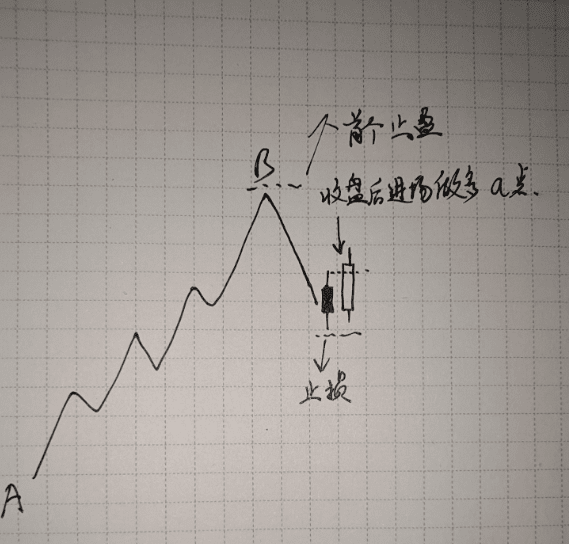
Entering at point a is more aggressive. If you don't enter at point a, continue to wait. After point a rises to point b and then falls again, and then stops falling and rises after reaching point c, and then exceeds point b again, enter long. This is entry point b. Place the stop loss a little below point c, and set the first profit target at point B.
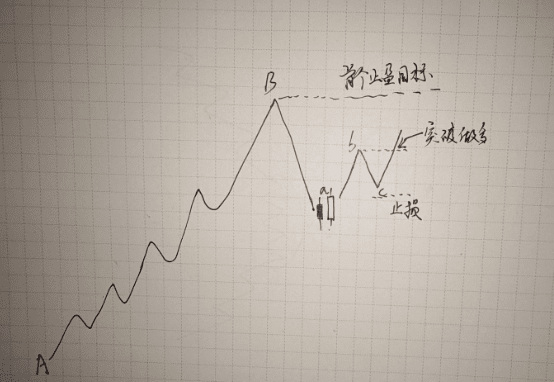
Entering long at points a and b is following the direction of AB, which is called following the trend, and how to follow the trend.
Let's talk about the situation of option B:
Why is B more reliable than A, even though they both move in the opposite direction? Because during the sideways consolidation, the energy of both bulls and bears is slowly exhausted and balanced. The longer the sideways period, the closer the probability of going up or down will be to 50%. But often the trend just enters a larger range...
Similarly, without using technical indicators such as moving averages, operate like this:
AB segment is an upward trend, and the rise at point B stalls, expanding sideways consolidation, forming a box consolidation area with B as the upper boundary and C as the lower boundary.
, After a period of time, the price breaks down through C. Should you short when it breaks through C? It's best not to, because a new trend has not been established. Entering at this time is still about trying to pick the top and go against the trend.
Choose to wait. When it reaches point D, it stops falling and rises, but the price does not return to the BC range, but instead goes down again. When it breaks down through point D, enter short, with the target at 50% of the AB segment or a support level of the AB segment.
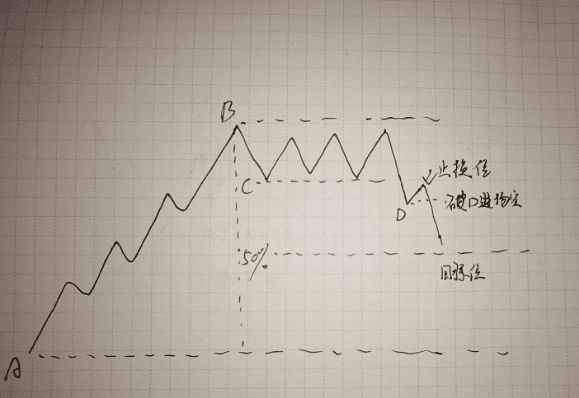
Why is it at 50%? Because this is the formation of a deep retracement
The watershed of , from breaking down C to about 50% of AB, it may return to the original AB trend or form a larger range.
After breaking down 50%, you can continue to be bearish and treat it as a downtrend has begun. What you need to do is wait for the market to prove you wrong.
Finally, let's talk about the situation of option C:
Look back at that golden rule above:
Trends mostly originate from sideways consolidation. The longer the consolidation, the greater the probability of a trend starting. Once a trend is established, it is difficult to change (the direction on the right is mostly in the same direction as the left).
The AB segment is an upward trend, and the rise at point B stalls, expanding a sideways consolidation area with BC as the upper and lower boundaries. After a period of time, the price breaks up through point B. Should you enter long at this time? Of course you can, of course you can. Place the stop loss a little below the C edge. The worst case is a fake breakout, and you get worn down and stopped out. The benefit is that you don't miss out, and if it's a real breakout, you get a new uptrend.
If you feel that entering when it breaks B is too aggressive and you are afraid of a fake breakout and getting trapped, then continue to wait. Wait until D drops and retraces and then breaks through point D again to enter.
The stop losses are all a little below the C edge, and the profit target is the same distance as AB (calculated from point C, C - profit target = AB space).
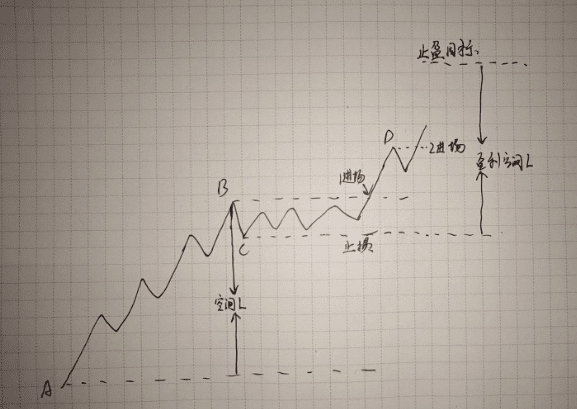
End, that's the answer to "What is following the trend, and how to follow the trend?"
Hope you can understand......
Go find the real-time charts on the market yourself...
There are thousands of charts, but the underlying logic remains the same...
What if you don't understand? Wait patiently, and use stillness to control movement.
Coin trading is about doing simple things repeatedly, sticking to one method for a long time, using it skillfully. Coin trading can also be like other industries, practice makes perfect, making every decision decisively and without thinking.
This year is also my seventeenth year of trading coins. I entered the market with 10,000 and now I support my family by trading coins! It can be said that I have used 80% of the methods and techniques in the market. If you want to use coin trading as a second career to support your family, sometimes listening and watching more will reveal things outside of your cognition, at least it can save you 5 years of detours!
Follow me @加密大师兄888 to keep up with the trend and get rich together! Share the bull and bear!
